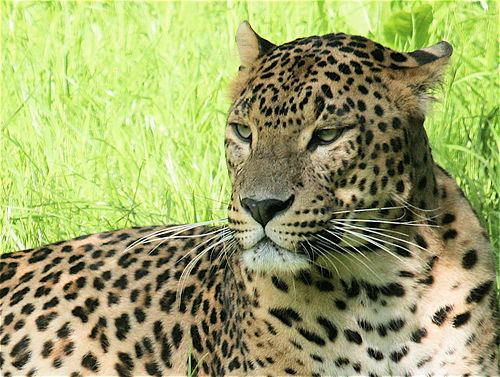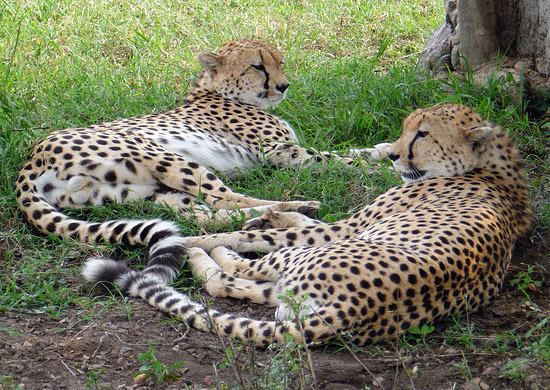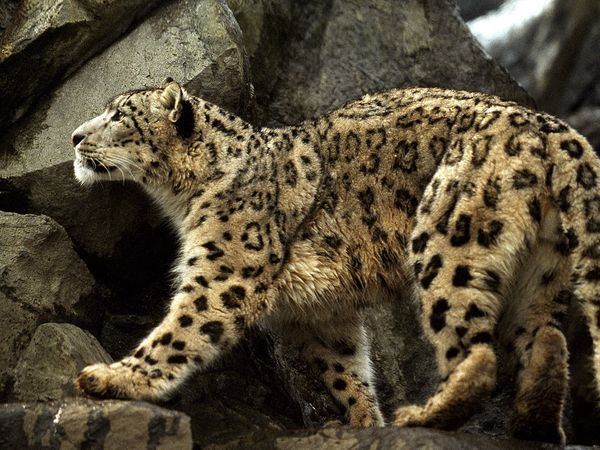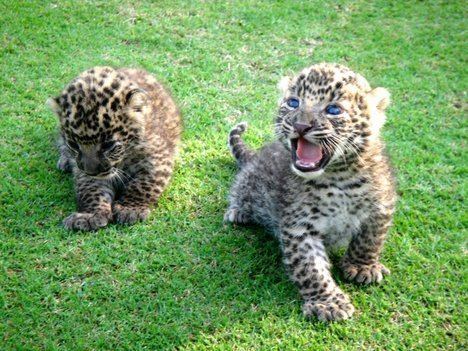Scientific name Panthera pardus tulliana Order Carnivores | ||
 | ||
Similar Leopard, Roaring cats, Persian leopard, Felidae, Arabian leopard | ||
The Anatolian leopard (Panthera pardus tulliana), also called the Asia Minor leopard, was proposed in the 19th century as a distinct leopard subspecies native to south-western Turkey. Based on morphological analysis, it was proposed to retain the name 'Anatolian leopard' for the population that lived in south-western Turkey, where leopards are considered extinct since the mid-1970s. To date, no leopard has been recorded in this area.
Contents

The first camera trap photograph of a leopard in Turkey was obtained in September 2013 in the Trabzon Province. In November 2013, a leopard was killed in the Çınar district of Diyarbakır Province. This specimen is considered the western-most observation of a Persian leopard.

Distribution and habitat

The Anatolian leopard was first described on the basis of a skin of a leopard that was shot in the extreme west of Asia Minor, near Izmir in Turkey. Anatolian leopards are thought to have ranged in the Aegean and western parts of Turkey but were not known to be present in the Black Sea region.

Since surveys were not carried out in western Turkey until the mid 1980s, biologists doubted whether leopards still survived in this part of Anatolia. Sighting reports from the environs of Alanya in the south of the Lycian peninsula suggested that a scattered population existed between Finike, Antalya and Alanya in the early 1990s. Fresh faecal pellets found in Termessos National Park in 1992 were attributed to an Anatolian leopard. A decade later, no signs of the presence of leopards were detected in the Termessos National Park. Interviews conducted with local people and national park personnel did not corroborate the presence of leopards in this area.

During surveys carried out between 1993 and 2002, zoologists found evidence of leopards in the upper forest and alpine zones of the Pontic Mountains in northern Anatolia. In this area, possible prey species include wild ungulates such as deer, chamois, wild goat, wild pig but also European hare and Caucasian grouse. It is unknown whether a significant number of leopards still exist in Anatolia. Extensive trophy hunting is thought to be the prime factor for the decline and possible extinction of the Anatolian leopard. One hunter named Mantolu Hasan killed at least fifteen leopards between 1930 and 1950.

In eastern Turkey, the range of Anatolian leopards converges with the range of Caucasian leopards. A male leopard camera trapped in the Georgian Vashlovani National Park in 2003 was considered a Caucasian leopard.
The last leopard in Syria is reputed to have been killed in 1963 in the Alauwit Mountains. Leopards reported from the Galilee, the Golan Heights and the Judaean Desert are considered Arabian leopards.
Sightings and encounters
In 1974 a leopard was killed in Bağözü village near Beypazarı following an attack on a woman. For three decades, this encounter was considered to have been the last confirmed sighting of an Anatolian leopard.
In 2010, a leopard was killed and skinned in the Siirt Province. In September 2013, an animal captured by camera traps in the Trabzon Province in Turkey's northern region was identified as a leopard by biologists from the Karadeniz Technical University who asserted to have obtained several photos of leopards in the surveyed area. On 3 November 2013, a leopard was killed after it attacked a shepherd in Diyarbakır Province in the country's southern region.
The Kaplani of Samos Island in Greece
The Natural History Museum of the Aegean on Samos Island exhibits a stuffed leopard that was allegedly killed on the island in the 1870s. It carries a label with the name Kaplani, Greek: Καπλάνι, indicating it is a leopard. Its size, shape and coat colour is rather unnatural for a leopard, but may have been altered in the process of preparing the skin. It is possible that an Anatolian leopard reached the island by swimming across a channel from the Turkish coast, which is about 1.7 km (1.1 mi) farther east.
The story of the leopard and the exhibit inspired Greek author Alki Zei to write a novel for children Greek: Το καπλάνι της βιτρίνας translated as Wildcat under Glass.
The leopard was hunted by farmers and shepherds and was forced to take refuge in a cave. The entrance was documented as being blocked with large stones so that the animal would die out of hunger and thirst. After some time, a villager named Gerasimos Gliarmis opened a hole and climbed down the cave unarmed, in order to find the leopard's corpse. But the animal had managed to survive eating the remains of its old prey and drinking the water which had gathered in the cave's hollow. The leopard tried to fight his way out, but the villager's brother, Nikolaos Gliarmis, also climbed down the cave for help and managed to kill it. Gerasimos Gliarmis was injured by the wildcat in his chest and died a short time later from infection.
